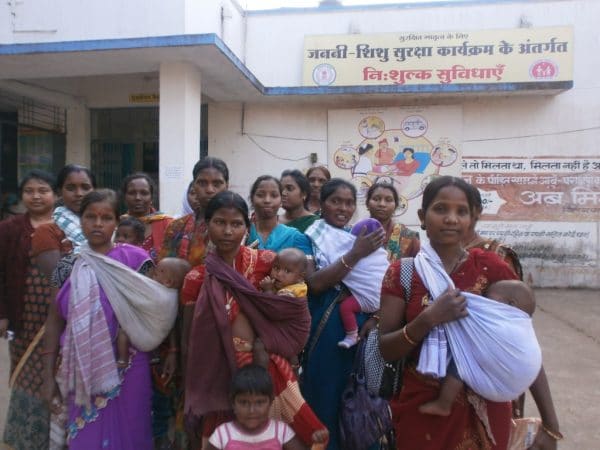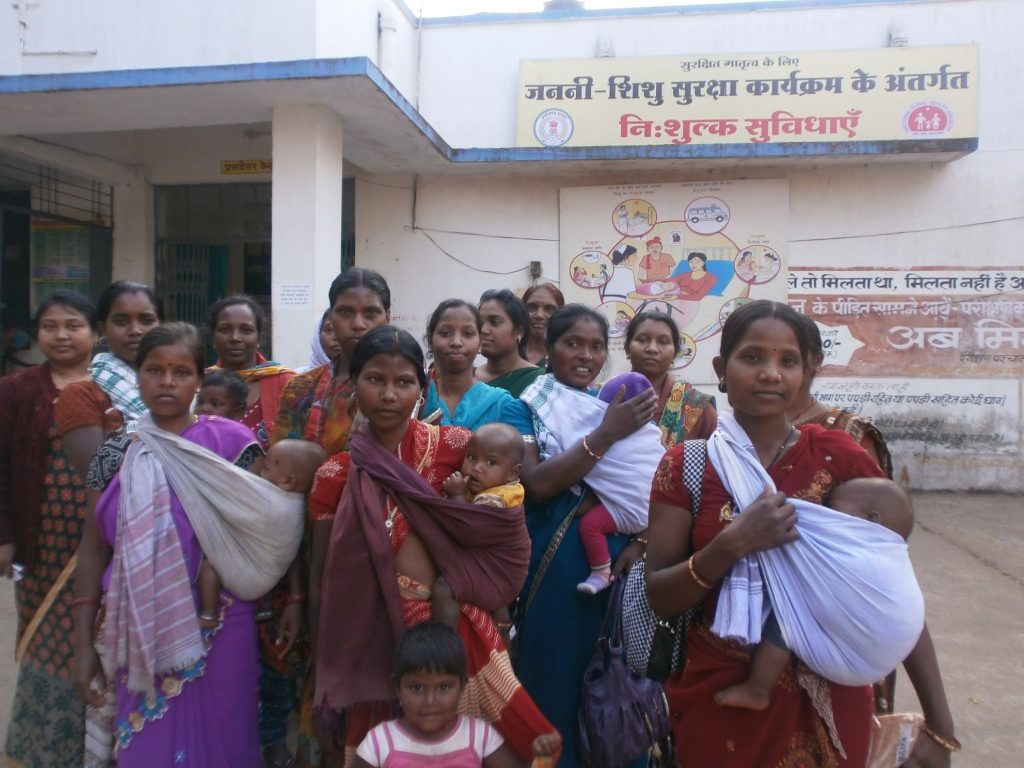Couple Years of Protection:
1,59,72,012: Male Condom
14,53,802: OCP
18,75,063: IUCD
7,839: Male Sterilisation
13,26,949: Female Sterilization
27,325: Injectable – DMPA

HLFPPTÔÇÖs Programme ÔÇ£Capacity Building of HSPs on IUCD and PTCÔÇØ is leveraging the collaborative influence of ANMS, ASHAs and AWWs for enabling community members make an informed choice for family planning, reaching unmet need, and ensuring that quality services being provided are well utilised┬á┬á ┬á

A group of tribal women clients post successful IUCD placement at District Hospital, Jashpur in Chhattisgarh
Community-level collaboration among Accredited Social Health Activists (ASHAs), Auxiliary Nurse Midwife (ANMs) and Anganwadi Workers (AWWs) by the Department of Health and Family Welfare (DHFW) and Department of Women and Child Development (DWCD) has proven to be successful for promoting inter-sectoral coordination in Reproductive and Child Healthcare. Small and large-scale convergence efforts have been attempted across various states that have produced models of success under programmes on nutrition, health and women empowerment.
As a unique initiative, HLFPPTÔÇÖs Programme ÔÇô Capacity Building of Health Service Providers (HSPs) on IUCD Insertions and Pregnancy Test Cards (PTCs) ÔÇô has devised a Convergence Model that is leveraging the combined power of ASHAS, ANMs and AWWs for enabling community members to make an informed choice about family planning, thus adding to the success of the training programme and also popularising IUCD as a Spacing Method.
The convergence model has introduced the component of demand generation for quality IUCD services under the programme, which is essentially meant for improving service delivery at the supply side. With this model in place, the programme now ensures an end-to-end quality service delivery. One the supply side the programme is improving better provision of IUCD services through training HSPs at health facilities, while on the other hand the convergence model is triggering higher demand for quality service delivery from community members.
The central idea of the programme is to train HSPs on IUCD. However, to increase the service delivery output of trained HSPs, the team has gone beyond the realm of the programme for mobilising community members, especially women, and increasing IUCD client footfall at health facilities by creating conducive environment for them to utilise the enhanced skills of trained HSPs. This requires: increasing awareness level among women in communities about contraception, particularly IUCD as a safe reversible method; convincing them to opt for or consider IUCD as an alternative; dispel their myths regarding IUCD; informing them about availability of trained HSPs; and ultimately motivating them to reach health facilities for IUCD insertions.
To achieve this, the team has created a Convergence Model, whereby it is utilising the combined forces of ANMs and other influential stakeholders ÔÇô such as ASHAs, AWWs and Panchayati Raj Institutions ÔÇô who, though not directly associated with the programme, have a strong influence on women in their respective communities. These stakeholders are otherwise working in silos. However, community women happen to be their common point of contact. Incidentally, community women are an important stakeholder on whom success of the programme hinges, because trained HSPs ultimately need to apply their newly-acquired skills on eligible women candidates. Hence, the programme team is leveraging the combined forces of ANMs, AWWs, ASHAs and other influencing agencies like PRIs to meet its ultimate objective and gradually creating a continuum of care in family planning in communities, with a special focus on IUCD.
This model has brought a huge difference to the programmeÔÇÖs success wherever it has been adopted including Jammu & Kashmir, Uttar Pradesh and most recently in Chhattisgarh. In all these states, the programme team has found that client footfall increased wherever they included AWWs and ASHAs along with ANMs to popularise IUCD among community members.
For instance, during training sessions of 30 HSPs at District Hospital, Jashpur in Chhattisgarh this year, the programme team adopted Convergence Model to mobilise IUCD volunteers. The trainings were conducted in three batches between February and March 2015. Surprisingly, a large number of 120 women volunteers from nearby tribal communities turned up for IUCD insertions at the conclusion of the training, thanks to the influence of the Convergence Model. This large turnout gave the newly trained HSPs wide exposure on issues such as counselling of candidates on spacing method, selecting eligible candidates for IUCD placement and practical experience, thus boosting their confidence level. After initial screening, 62 volunteers were selected for supervised IUCD placement. This is no mean feat, considering the slim chances of practical experience trainees usually get during IUCD training programme.